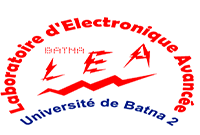In this paper, the role of introducing Germanium (Ge)/IGZO heterostructure in enhancing the Infrared (IR) photodetection properties of thin-film phototransistor (Photo- TFT) is presented. Numerical models for the investigated device are developed using ATLAS device simulator. The influence of Ge photosensitive layer thickness on the sensor IR photoresponse is carried out. It is revealed that the optimized IR Photo-TFT based on p-Ge/IGZO heterojunction can offer improved IR responsivity of 4.1×10(exp2) A/W, and over 10(exp6) of sensitivity. These improvements are attributed to the role of the introduced p-Ge/IGZO heterostructure in promoting IR photodetection ability and improved separation and transfer mechanisms of photo-exited electron/hole pairs. The photosensor is then implemented in an optical inverter gate circuit in order to assess its switching capabilities. It is found that the proposed phototransistor shows an improved optical gain thus indicating its excellent performance. Therefore, providing high IR responsivity and low dark noise effects, the optimized Ge/IGZO IR Photo-TFT can be a potential alternative photosensor for designing optoelectronic systems with high-performance and ultralow power consumption.
In this paper, a new efficient and low-cost Schottky Diode (SD) based on a-Si/Ti structure was elaborated using RF magnetron sputtering technique. An exhaustive investigation of structural and electrical properties was performed, where the sputtered device was characterized using X-ray diffraction (XRD) and Keithley (4200-SCS) to measure the current-voltage characteristics. Moreover, a comprehensive study regarding the impact of the Ti layers on the device characteristics is carried out. It was demonstrated that implementing Ti intermediate layers could induce depletion regions at the interfaces, leading to significantly enlarged voltage barrier height. Furthermore, the elaborated SD exhibits a rectification behavior providing an appropriate current with a favorable ideality factor. This is mainly due to the reduced series resistance of the multilayer structure as confirmed by electrical analysis. Therefore, the proposed SD structure based on Ti intermediate layers provides improved performance and can open a new route for the fabrication of promising alternative devices for microelectronic and sensing applications.
